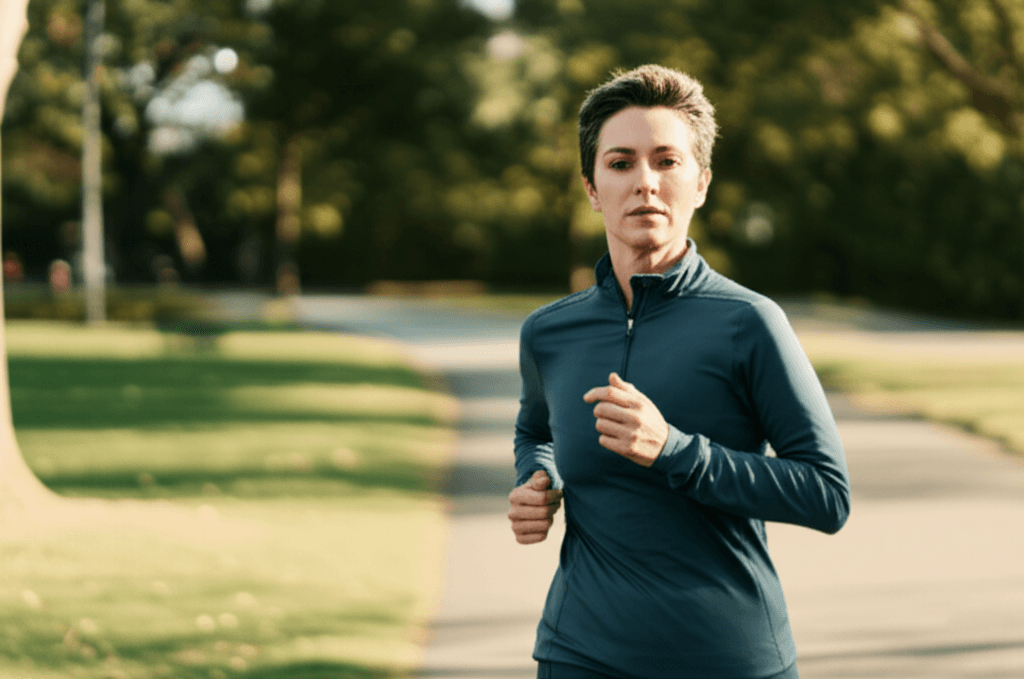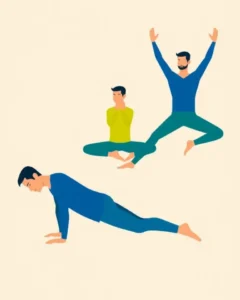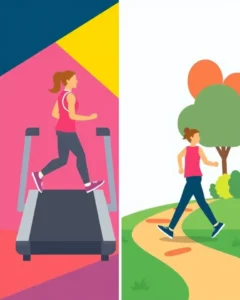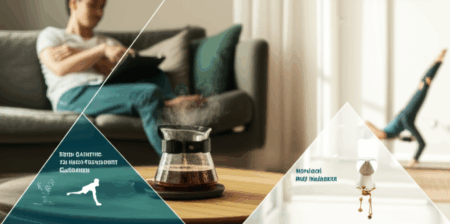Exercise is a powerful, accessible, and natural tool for enhancing mental well-being and mitigating the symptoms of mental health conditions such as anxiety and depression. Regular physical activity profoundly impacts mood, cognitive function, stress management, and overall emotional balance. While the physical benefits of exercise are widely recognized, understanding how to maximize its mental health advantages can lead to a more profound and sustained improvement in psychological well-being.

The Science Behind Exercise and Mental Health
The positive effects of exercise on the brain are multifaceted. When you engage in physical activity, your body undergoes several physiological changes that directly influence mental states:
Neurotransmitter Release
Exercise stimulates the production and release of “feel-good” chemicals in the brain, including endorphins, serotonin, and dopamine. Endorphins act as natural painkillers and mood elevators, creating feelings of happiness, energy, and relaxation. Serotonin plays a crucial role in regulating mood, anxiety, and sleep, with higher levels associated with decreased feelings of depression and anxiety. Dopamine contributes to feelings of pleasure and motivation.
Stress Hormone Regulation
Physical activity helps reduce the body’s production of cortisol, a primary stress hormone. Chronic high levels of cortisol can contribute to mental and physical health problems. Regular exercise can lower cortisol levels, thereby helping to reduce stress and prevent burnout. It also helps balance the activity of the sympathetic and parasympathetic nervous systems, easing muscle tension and calming the mind.
Neurogenesis and Brain Health
Exercise promotes neuroplasticity, the brain’s ability to adapt and form new connections. It stimulates the growth of new brain cells and can help prevent age-related cognitive decline, leading to sharper memory and thinking. Increased blood flow to the brain during aerobic activities also contributes to improved brain function and can help reduce feelings of depression and anxiety.
Improved Sleep
Regular exercise significantly improves sleep quality, which is vital for good mental health. Good sleep, in turn, helps individuals manage their mood more effectively.

Strategic Approaches to Maximize Mental Health Gains
To fully harness the mental health benefits of exercise, it’s essential to move beyond simply “getting active” and adopt a more strategic and intentional approach.
1. Consistency is Key
Regularity in exercise is paramount for sustained mental health improvements. Consistent engagement in physical activity leads to long-term progress, builds habits, and fosters mental resilience. Studies show that consistent sleep and exercise can significantly help reduce anxiety and depression. Even small, consistent steps, like 10 minutes of bodyweight exercises a few times a week, can have a substantial impact.
- Set Realistic Goals: Begin with achievable targets, such as exercising three to five times a week for 30 minutes, and gradually increase intensity or duration.
- Create a Routine: Schedule workouts at specific times to build habits and ensure consistency. People who are more consistent in the timing of their daily activity tend to show fewer depressive symptoms.
- Patience and Self-Compassion: Habits take time to form. Be patient with yourself, and view setbacks as temporary rather than dwelling on mistakes.
2. Choose Enjoyable Activities
The type of exercise matters less than finding activities you genuinely enjoy and will stick with. When exercise feels like a chore, consistency becomes difficult.
- Variety is Beneficial: Both aerobic exercises (like walking, jogging, cycling, swimming, and dancing) and resistance training (strength training with weights or bands) have been shown to reduce symptoms of depression and anxiety. A combination of anaerobic and aerobic exercises can be most effective.
- Gentle, Rhythmic Movements: For anxiety and depression, gentle, rhythmic movements such as yoga or dance are often ideal as they help regulate mood, release stress, and promote mind-body connection.
- Consider HIIT: High-intensity interval training (HIIT) has been shown to reduce anxiety, with calming impacts roughly twice as high as low-impact exercise. Vigorous and short-duration exercises can also be very effective for mild-to-moderate symptoms of depression and anxiety.
3. Embrace Mindful Movement
Mindful movement integrates physical activity with mindfulness practices, emphasizing breath awareness and body awareness. This approach can significantly enhance mental health outcomes by reducing stress, regulating emotions, and improving cognitive function.
- Focus on the Present: Instead of zoning out or being distracted, pay attention to your breath, the sensations of your feet hitting the ground, the rhythm of your movements, or the feeling of wind on your skin.
- Activities for Mindful Movement: Yoga, Tai Chi, Qigong, and even mindful walking or dancing are excellent options. These practices can calm the amygdala (the brain’s fear center) and strengthen the prefrontal cortex, reducing symptoms of anxiety and depression.
- Non-Judgmental Attitude: Approach your movement with a non-judgmental and non-competitive attitude, focusing on self-awareness rather than performance.
4. Exercise Outdoors (Green Exercise)
Engaging in physical activity in natural environments offers amplified mental health benefits compared to exercising indoors.
- Enhanced Mood and Stress Reduction: Spending time in nature reduces feelings of anger, tension, confusion, and depression, while increasing feelings of vitality, enthusiasm, pleasure, and self-esteem. It also significantly lowers cortisol levels.
- Increased Mindfulness and Connection: Outdoor exercise encourages mindfulness by drawing attention to the sights, sounds, and sensations of nature, promoting a sense of calm and relaxation. It can also foster a greater sense of connection to nature, which is linked to improved well-being.
- Improved Sleep: Exposure to natural light during outdoor exercise helps regulate circadian rhythms, leading to better sleep.
5. Incorporate Social Interaction
Exercising with others can significantly boost enjoyment, motivation, and accountability, while also providing the crucial mental health benefits of social connection.
- Team Sports and Group Classes: Joining a team sport, a group exercise program, or a walking/hiking club provides opportunities to meet new people and build friendships.
- Workout Buddies: Exercising with a friend or loved one not only makes it more fun but also creates accountability, helping you stick to your routine.
- Social Support: The companionship offered through shared exercise can be as important as the exercise itself, especially for individuals experiencing mood disorders.
6. Consider Exercise as Adjunctive Therapy
For individuals experiencing mental health challenges, exercise can be a powerful complement to traditional therapies. Research suggests that exercise can be as effective as antidepressants or psychological treatments like cognitive behavioral therapy for mild to moderate depression and anxiety.
- Combined Approaches: Combining physical activity with psychological therapy has shown positive effects, particularly for depressive symptoms. Exercise can also make patients more likely to comply with other treatment programs.
- Therapist Guidance: While often overlooked, mental health professionals are increasingly recognizing the importance of exercise. Discussing how physical activity can benefit your mental health with a therapist can be valuable, especially in identifying and overcoming barriers to exercise. Some therapists even incorporate “walk-and-talk” sessions or wilderness therapy.
- Structured Programs: Structured exercise programs, even short-term ones (12 weeks or less), have proven effective in improving symptoms of depression and anxiety across various clinical conditions.

Practical Tips for Implementation
- Start Small: If regular exercise isn’t already part of your routine, begin with short sessions (even 5-10 minutes) and gradually increase duration and intensity. Any exercise is better than none.
- Listen to Your Body: Focus on what feels good rather than what “looks like” exercise. Avoid movements that cause pain.
- Integrate into Daily Life: Look for opportunities to move more throughout your day, such as taking the stairs, walking or cycling for short errands, or taking walking meetings.
- Track Progress: Using a journal, app, or calendar to log your efforts can help you celebrate consistency and stay motivated.
- Reward Yourself: Acknowledge your efforts. While feeling better is a reward in itself, planning small rewards for sticking to your goals can also boost motivation.
By integrating these strategic approaches, individuals can transform their exercise routine from a mere physical endeavor into a potent practice for cultivating lasting mental well-being.







